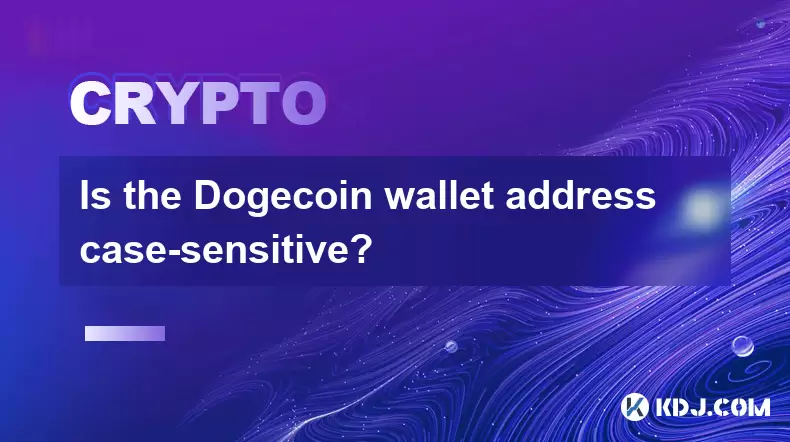-
 Bitcoin
Bitcoin $107,275.1551
-0.32% -
 Ethereum
Ethereum $2,485.3056
1.77% -
 Tether USDt
Tether USDt $1.0005
0.03% -
 XRP
XRP $2.2223
1.31% -
 BNB
BNB $657.7608
1.39% -
 Solana
Solana $156.3566
3.02% -
 USDC
USDC $0.9999
0.01% -
 TRON
TRON $0.2791
1.09% -
 Dogecoin
Dogecoin $0.1651
0.45% -
 Cardano
Cardano $0.5738
2.78% -
 Hyperliquid
Hyperliquid $40.2672
5.82% -
 Bitcoin Cash
Bitcoin Cash $517.5487
5.30% -
 Sui
Sui $2.7981
-0.40% -
 Chainlink
Chainlink $13.3500
-0.36% -
 UNUS SED LEO
UNUS SED LEO $9.1220
1.12% -
 Avalanche
Avalanche $17.9515
-0.32% -
 Stellar
Stellar $0.2361
-0.44% -
 Toncoin
Toncoin $2.9423
2.33% -
 Shiba Inu
Shiba Inu $0.0...01145
-0.68% -
 Litecoin
Litecoin $86.1693
-0.63% -
 Hedera
Hedera $0.1493
0.64% -
 Monero
Monero $315.1374
1.81% -
 Polkadot
Polkadot $3.4002
-0.73% -
 Dai
Dai $1.0001
0.03% -
 Bitget Token
Bitget Token $4.5413
-1.35% -
 Ethena USDe
Ethena USDe $1.0002
-0.01% -
 Uniswap
Uniswap $7.1733
-0.57% -
 Aave
Aave $274.0465
-0.23% -
 Pepe
Pepe $0.0...09810
2.24% -
 Pi
Pi $0.5101
-3.10%
What are the options for the multiples of Dogecoin leveraged trading?
Dogecoin leveraged trading offers multiples from 2x to 100x or higher, depending on the exchange, amplifying potential profits but drastically increasing liquidation risk.
Mar 13, 2025 at 11:00 pm

Key Points:
- Dogecoin leveraged trading offers exposure to significant price swings, magnifying both profits and losses.
- Multiple leverage options are available, typically ranging from 2x to 100x or even higher, depending on the exchange.
- Higher leverage amplifies potential returns but also increases the risk of liquidation.
- Choosing the right leverage depends on your risk tolerance, trading strategy, and market conditions.
- Understanding margin calls, liquidation, and position sizing is crucial for successful leveraged trading.
What are the options for the multiples of Dogecoin leveraged trading?
Leveraged trading in Dogecoin, like other cryptocurrencies, allows traders to amplify their potential profits (and losses) by borrowing funds from an exchange. The leverage multiple represents how many times your initial capital is magnified. For instance, 2x leverage means you control twice the amount of Dogecoin as your actual investment. The availability of specific leverage multiples varies considerably between different cryptocurrency exchanges.
Many popular exchanges offer a range of leverage options for Dogecoin trading. These options are usually expressed as multiples, such as 2x, 5x, 10x, 20x, 50x, and even 100x or higher in some cases. The exact multiples offered depend on the platform, the specific trading pair (e.g., DOGE/USDT), and the exchange's risk management policies. These policies may change over time. Always check the exchange's current offerings before initiating a trade.
It's crucial to understand that higher leverage multiples significantly increase risk. While they offer the potential for larger profits, they also dramatically raise the likelihood of liquidation. Liquidation occurs when the value of your position falls below the required margin, leading to the automatic closure of your trade at a loss. This loss can often exceed your initial investment.
The selection of an appropriate leverage multiple depends heavily on your risk tolerance, trading experience, and the specific market conditions. Conservative traders might opt for lower leverage multiples (e.g., 2x or 5x), aiming for smaller, more consistent gains while minimizing risk. More aggressive traders might employ higher leverage (e.g., 10x or higher) to pursue larger potential profits, but this comes with a substantially elevated risk of substantial losses.
The concept of margin is central to leveraged trading. Margin is the amount of your own capital you must deposit to open and maintain a leveraged position. The required margin is determined by the leverage multiple and the price of Dogecoin. If the price moves against your position, your margin may be depleted, triggering a margin call.
A margin call is a warning from the exchange that your position is at risk of liquidation. It usually provides you with a short timeframe to add more funds (margin) to your account to cover potential losses. Failure to meet a margin call results in liquidation, the forced closure of your trade. Therefore, understanding margin requirements and managing your risk effectively is paramount.
Position sizing is another crucial aspect of successful leveraged trading. This involves determining the appropriate amount of Dogecoin to trade based on your risk tolerance and available capital. It's essential to avoid over-leveraging, which can lead to rapid losses and liquidation, even with small price movements. Proper position sizing helps mitigate the impact of adverse market fluctuations.
Different exchanges offer different user interfaces and functionalities for leveraged trading. Some may provide tools for setting stop-loss orders, which automatically close your position when the price reaches a predetermined level, limiting potential losses. Others might offer advanced order types like trailing stops, which dynamically adjust the stop-loss level as the price moves in your favor.
Leveraged trading involves significant risk, and it's crucial to have a comprehensive understanding of the risks involved before engaging in it. It's advisable to practice with smaller amounts on a demo account before risking real capital. Familiarity with the mechanics of leveraged trading and risk management techniques is vital for minimizing potential losses.
Frequently Asked Questions:
Q: What is the maximum leverage available for Dogecoin trading? A: The maximum leverage offered varies considerably across different cryptocurrency exchanges. Some may offer up to 100x or even higher, while others might have lower limits. Always check the specific exchange's terms and conditions.
Q: Is high leverage always better? A: No, higher leverage amplifies both profits and losses. While it offers the potential for greater returns, it significantly increases the risk of liquidation. The optimal leverage depends on your risk tolerance and trading strategy.
Q: What happens if my Dogecoin leveraged trade gets liquidated? A: Liquidation means your position is automatically closed by the exchange because the value of your position has fallen below the required margin. This typically results in a loss, which could exceed your initial investment.
Q: How can I reduce the risk of liquidation in Dogecoin leveraged trading? A: Employing appropriate risk management techniques is key. This includes choosing a suitable leverage multiple based on your risk tolerance, utilizing stop-loss orders to limit potential losses, and practicing proper position sizing to avoid over-leveraging.
Q: Are there any fees associated with Dogecoin leveraged trading? A: Yes, exchanges usually charge fees for leveraged trading. These fees can include funding fees (interest on borrowed funds), trading fees (on the opening and closing of the trade), and potentially other fees depending on the platform. Review the exchange's fee schedule carefully.
Q: Where can I find Dogecoin leveraged trading options? A: Many cryptocurrency exchanges offer leveraged trading on Dogecoin. However, it's essential to choose a reputable and regulated exchange to mitigate risks associated with trading on less secure platforms. Always research and compare exchanges before selecting one.
Disclaimer:info@kdj.com
The information provided is not trading advice. kdj.com does not assume any responsibility for any investments made based on the information provided in this article. Cryptocurrencies are highly volatile and it is highly recommended that you invest with caution after thorough research!
If you believe that the content used on this website infringes your copyright, please contact us immediately (info@kdj.com) and we will delete it promptly.
- Coinbase, Altcoins, and Listings: What's the Buzz?
- 2025-07-01 00:30:11
- Chainlink's Bullish Signals: Investors Bet on Long-Term Value
- 2025-07-01 00:50:12
- CICADA Finance Soars on BNB Chain: A TGE Deep Dive
- 2025-07-01 01:30:11
- MicroStrategy's Bitcoin Bet: Holdings, Sell-Off Concerns, and S&P 500 Dreams
- 2025-07-01 01:30:11
- XRPL EVM Sidechain: Ethereum dApps Unleashed on XRP Ledger!
- 2025-07-01 01:35:11
- Bybit, Kraken, and Tokenized Stocks: A New Era for Trading?
- 2025-07-01 00:30:11
Related knowledge

How to extract the public key from a Bitcoincoin wallet address?
Jun 16,2025 at 07:49am
Understanding the Relationship Between a Dogecoin Address and Its Public KeyIn the world of Dogecoin (DOGE), users often interact with wallet addresses but rarely see the underlying cryptographic components such as the public key or private key. A Dogecoin address is derived from the public key through a series of hashing operations. Specifically, the p...

What is the difference between a Bitcoincoin wallet address and a Bitcoin address?
Jun 22,2025 at 10:28pm
Understanding the Fundamentals of Cryptocurrency AddressesIn the world of cryptocurrencies, wallet addresses serve as unique identifiers for users to send and receive digital assets. Each cryptocurrency typically has its own address format, which is derived from cryptographic algorithms and encoding methods. Both Dogecoin and Bitcoin utilize public-key ...

Is the Dogecoin wallet address case-sensitive?
Jun 15,2025 at 10:15pm
Understanding the Structure of a Dogecoin Wallet AddressA Dogecoin wallet address is a unique alphanumeric string used to receive and send DOGE. It typically starts with the letter 'D' and contains a combination of uppercase and lowercase letters along with numbers. The structure is based on cryptographic principles derived from public-key cryptography,...

How to verify whether a string is a valid Bitcoincoin wallet address?
Jun 14,2025 at 01:57am
Understanding the Structure of a Dogecoin Wallet AddressA Dogecoin wallet address is typically composed of a combination of letters and numbers, starting with the letter 'D'. This structure follows the same format as other cryptocurrencies that use the Bitcoin protocol, but with specific prefixes unique to Dogecoin. The standard length for a Dogecoin ad...

Dogecoin wallet address examples and structure analysis
Jun 13,2025 at 09:42pm
Understanding Dogecoin Wallet AddressesA Dogecoin wallet address serves as a unique identifier for receiving and sending DOGE. It functions similarly to a bank account number but is designed specifically for blockchain transactions. Each address consists of a combination of letters and numbers, typically starting with the letter 'D'. These addresses are...

What are the common types of Dogecoin wallet address formats?
Jun 15,2025 at 08:21pm
Understanding Dogecoin Wallet AddressesDogecoin wallet addresses are alphanumeric strings used to send and receive DOGE. These addresses follow specific formats that define their structure and compatibility with different wallets and blockchain explorers. Understanding these formats is crucial for ensuring secure transactions and proper integration with...

How to extract the public key from a Bitcoincoin wallet address?
Jun 16,2025 at 07:49am
Understanding the Relationship Between a Dogecoin Address and Its Public KeyIn the world of Dogecoin (DOGE), users often interact with wallet addresses but rarely see the underlying cryptographic components such as the public key or private key. A Dogecoin address is derived from the public key through a series of hashing operations. Specifically, the p...

What is the difference between a Bitcoincoin wallet address and a Bitcoin address?
Jun 22,2025 at 10:28pm
Understanding the Fundamentals of Cryptocurrency AddressesIn the world of cryptocurrencies, wallet addresses serve as unique identifiers for users to send and receive digital assets. Each cryptocurrency typically has its own address format, which is derived from cryptographic algorithms and encoding methods. Both Dogecoin and Bitcoin utilize public-key ...

Is the Dogecoin wallet address case-sensitive?
Jun 15,2025 at 10:15pm
Understanding the Structure of a Dogecoin Wallet AddressA Dogecoin wallet address is a unique alphanumeric string used to receive and send DOGE. It typically starts with the letter 'D' and contains a combination of uppercase and lowercase letters along with numbers. The structure is based on cryptographic principles derived from public-key cryptography,...

How to verify whether a string is a valid Bitcoincoin wallet address?
Jun 14,2025 at 01:57am
Understanding the Structure of a Dogecoin Wallet AddressA Dogecoin wallet address is typically composed of a combination of letters and numbers, starting with the letter 'D'. This structure follows the same format as other cryptocurrencies that use the Bitcoin protocol, but with specific prefixes unique to Dogecoin. The standard length for a Dogecoin ad...

Dogecoin wallet address examples and structure analysis
Jun 13,2025 at 09:42pm
Understanding Dogecoin Wallet AddressesA Dogecoin wallet address serves as a unique identifier for receiving and sending DOGE. It functions similarly to a bank account number but is designed specifically for blockchain transactions. Each address consists of a combination of letters and numbers, typically starting with the letter 'D'. These addresses are...

What are the common types of Dogecoin wallet address formats?
Jun 15,2025 at 08:21pm
Understanding Dogecoin Wallet AddressesDogecoin wallet addresses are alphanumeric strings used to send and receive DOGE. These addresses follow specific formats that define their structure and compatibility with different wallets and blockchain explorers. Understanding these formats is crucial for ensuring secure transactions and proper integration with...
See all articles

























































































